December Special
2nd International Agrobiodiversity Congress
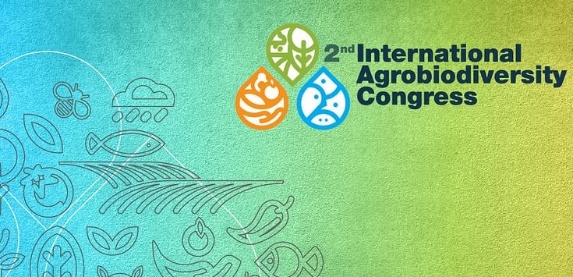
The 2nd International Agrobiodiversity Congress (IAC) was convened during 15-18 November 2021 by the Italian Ministry of Foreign Affairs and International Cooperation, CGIAR, and the Alliance of Bioversity International and CIAT, and organized in collaboration with a wide range of partner organizations (the 1st IAC was held in New Delhi, India, in November 2016). World-renowned scientists, policymakers, development organizations, business leaders, and representatives from rural agricultural communities around the world spoke about the role of agrobiodiversity in the context of food production and consumption. The participants highlighted the urgent need to conserve and use it sustainably. It was a virtual event, with over 2250 participants at its peak.
Participants expressed their commitment to action through the Rome Manifesto, including establishing a common basis for multisectoral action, consuming diverse foods that are nutritious, sustainable, affordable, acceptable, safe, and accessible to all. Scientific presentations spotlighted agrobiodiversity’s role in healthy food environments and value chains. At the Congress, representatives from diverse indigenous communities exchanged perspectives of the role of Indigenous Peoples in current food systems, among others.
For more, see
1. Details about the Congress: https://www.eatgrowsave.org/
2. Rome Manifesto: https://static1.squarespace.com/static/60ba6f3c74111c29f5572da2/t/619100c8b5d8d65b6b2b38ca/1636892877759/Manifesto_brochure_final_v5.pdf
3. Reawakened foods: https://www.greenqueen.com.hk/reawakened-foods-campaign-global-biodiversity/
4. India Revives its Traditions of Wild Foods: https://foodtank.com/news/2021/11/india-revives-its-traditions-of-wild-foods/
5. Eat, Grow, Save Agrobiodiversity: Congress gathers participants from around the globe https://www.eurekalert.org/news-releases/936558
6. There is a market for biodiversity—and it is expanding: https://www.environmental-finance.com/content/market-insight/there-is-a-market-for-biodiversity-and-it-is-expanding.html?pf=print
Research Results
1. Researchers uncover ‘genetic goldmine’ underlying plant resilience in extreme desert environment

With climate change looming on the world, it is essential to improve crop production and resilience under dry and nutrient-poor conditions. Desert plants have evolved to flourish under such conditions. Therefore, understanding the underlying mechanisms for their adaptation may help to ensure food security. An international team of researchers, led by Rodrigo Gutiérrez at the Pontificia Universidad Católica de Chile, Santiago, Chile, has identified genes associated with plant survival in one of the harshest environments on Earth: The Atacama Desert in Chile. The Atacama Desert is the driest nonpolar place on Earth, but dozens of plant species grow there. Hence it offers a unique opportunity to explore plant adaptations to extreme environmental conditions. Researchers quantified drought, nutrient deficiencies, large diurnal temperature oscillations, and pH gradients that define three distinct vegetational belts along the altitudinal cline. They deep-sequenced transcriptomes (of 32 dominant plant species spanning the major plant clades) and assessed soil microbes by metabarcoding sequencing.
Researchers hypothesize that adaptive mutations occurred in genes that could underlie plant adaptation to the desert conditions, including genes involved in response to light and photosynthesis, which may enable plants to adapt to the extremely high light radiation in the Atacama. Using two codon-based methods, the team identified 265 candidate positively selected genes (PSGs) in the Atacama plants, 64% of which are located in Pfam (protein family) domains, supporting their functional relevance. They obtained functional evidence linking 59/184 PSGs with an Arabidopsis ortholog that is known to promote plant resilience. As some Atacama plants are closely related to staple crops, these candidate PSGs are a “genetic goldmine” to engineer crop resilience to face climate change. “Our study of plants in the Atacama Desert is directly relevant to regions around the world that are becoming increasingly arid, with factors such as drought, extreme temperatures, and salt in water and soil posing a significant threat to global food production,” said Gutiérrez.
Access the full paper at https://www.pnas.org/content/118/46/e2101177118
2. Cracking the core molecular and physiological traits of drought-tolerant rice offers hope for dry-season rice
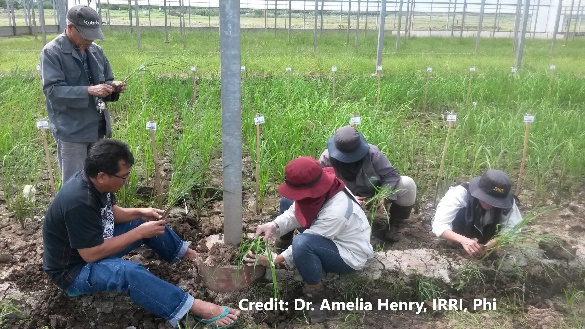
For many smallholder farmers in South and Southeast Asia, rice is more than a staple food—it’s a livelihood. Generations of smallholder farmers have relied solely on rainfall to irrigate their crops, but the increasing frequency and severity of dry spells caused by climate change are putting rice production under extreme pressure. Rice has evolved and is grown mostly in the wet and intermittently dry agroecosystem. However, patterns of its adaptation to differences in water availability remain poorly understood. Dry spells caused by climate change are putting rice production under extreme pressure. Traditional rice varieties grown in these regions have adapted to dry conditions.
Identifying the genes involved in drought resistance of traditional rice varieties could hold the key to developing strategies to boost rice production during drought. Simon Groen at the University of California, Riverside, USA, and colleagues take an evolutionary systems approach to characterize adaptive drought resistance traits across roots and shoots. They find that rice harbours genetic variation in molecular, physiological, and morphological traits linked to higher fitness under drought. They identify modules of co-expressed genes that are associated with adaptive drought avoidance and tolerance mechanisms. They found that drought had a greater effect on gene expression patterns in the roots than in the shoots. This study provides an unprecedented, integrative view of rice adaptation to water-limited field conditions. The team hopes their findings will help to improve efforts to breed resilient rice varieties.
Access the abstract at https://academic.oup.com/plcell/advance-article-abstract/doi/10.1093/plcell/koab275/6427550?redirectedFrom=fulltext#
3. Identifying highly recombinant plants for breeding
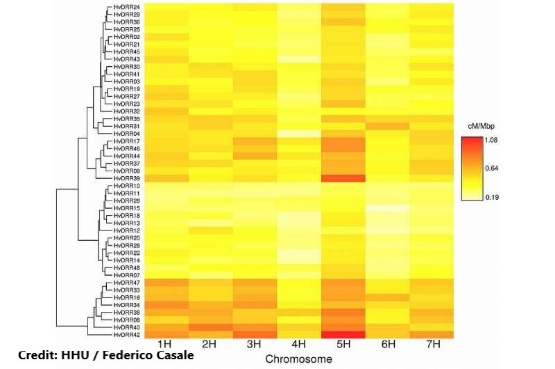
For efficient plant breeding, it is necessary to create many genetic variants within a short time to facilitate the selection of the most suitable candidates with many different characteristics. Benjamin Stich from Heinrich Heine University Düsseldorf (HHU), Germany, and his colleagues have now developed a method for using natural variations to identify what are referred to as “highly recombinogenic individuals,” and the method has been tested using a large-scale barley experiment. There are genotypes that, for example, reshuffle their genome at more locations than others, increasing their capacity to generate variation in the progeny.
The researchers developed a method to identify genotypes that recombine at more locations among variants of natural populations. Using this method, it is now possible to identify this characteristic in a very large number of genotypes, just to find a few highly recombinogenic ones. Researchers examined around 50,000 molecular markers in the offspring of those members, which allowed them to determine how the genomes of the parents were “mixed” in the progeny. The method makes it possible to design selection programmes much more efficiently, and thus to accelerate the development of plant and animal varieties, without having to artificially alter the genome. “With our new method, we can now breed highly recombinogenic genotypes systematically to then produce considerably more variants in a crossing experiment to then select the most promising plants from that group,” says Stich.
For more, see https://phys.org/news/2021-11-highly-recombinant.html
Access the full paper at https://onlinelibrary.wiley.com/doi/10.1111/pbi.13746
4. RNA findings offer a new perspective for breeding polyploid crops
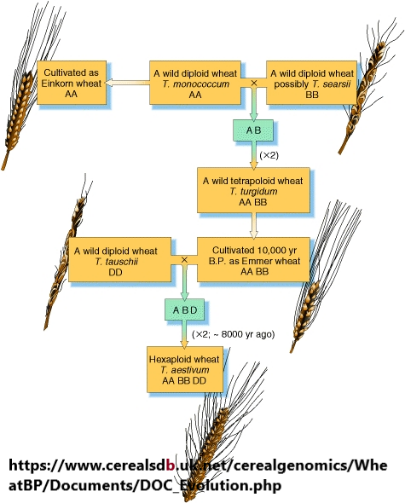
Crops often have multiple genomes hybridized from their parents, a condition known as polyploidy. Polyploidy is a major route to the formation of new species in plants and an important way of improving agronomic traits in crops. Researchers at the John Innes Centre, Norwich, UK (led by Yiliang Ding), and the Key Laboratory of Molecular Epigenetics, Northeast Normal University, Changchun, China (led by Huakun Zhang), studied how much of the protein was made from homeologous pairs from different subgenomes of wheat, i.e. A, B and D, which come from three ancestral grasses. Using the SHAPE method (Selective 2′-hydroxyl acylation analysed by primer extension) developed by the Ding lab to capture the snapshot of RNA structure allowed the team to study the relationship between RNA structure and translation.
The team wanted to find out if these single-nucleotide variants (SNVs) may cause differences in the RNA structure of homeologous pairs. Researchers identified SNVs responsible for big differences in RNA structure, which were called “RiboSNitches.” The SNVs that cause RNA structure change are subtler than other SNVs. This research suggests that subconsciously humans, over the 10,000 years of domesticating wheat, may have been selecting not only through DNA sequence but also through the structure of RNA, which has been largely unacknowledged before. Previously, plant breeding has used predictions based only on DNA sequence, but this research suggests that applying knowledge about RNA could help provide more accurate predictions of how traits are passed on. This potential use as a predictor of inheritance of plant traits will help in improving the efficiency of breeding programmes,
Access the full paper at https://genomebiology.biomedcentral.com/articles/10.1186/s13059-021-02549-y
5. Gibberellin in tomato: metabolism, signalling, and its role in drought responses
Drought is a common and devastating abiotic stress, which damages crops worldwide. Water deficiency, directly and indirectly, suppresses major biochemical
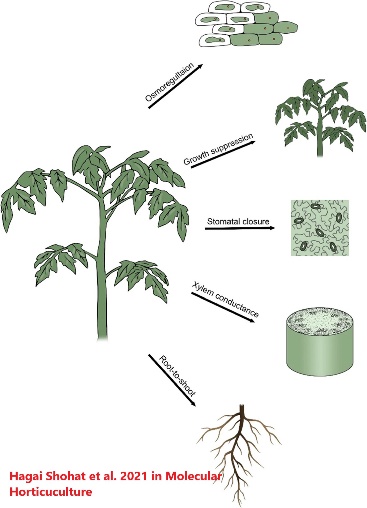
pathways, including photosynthesis and primary carbon metabolism, leading to inhibition of growth, flowering, and fruit development. The growth-promoting hormone gibberellin (GA) regulates numerous developmental processes throughout the plant life cycle. It also affects plant response to biotic and abiotic stresses. GA metabolism and signalling in tomato (Solanum lycopersicum) have been studied by David Weiss and his colleagues at the Hebrew University of Jerusalem, Israel, whereby major components of the pathways were characterized. Numerous studies on tomato response to drought have been conducted, including the possible role of GA in tomato drought resistance.
Overall, these studies provide an overview of GA biosynthesis and signalling in tomatoes, how drought affects these pathways, and how changes in GA activity affect tomato plant response to water deficiency. It also presents the potential of using the GA pathway to generate drought-tolerant tomato plants with improved performance under both irrigation and water-limited conditions. Most studies showed that reduced levels of activity of GA improve drought tolerance and drought avoidance. The authors conclude that manipulation of the GA pathway in tomatoes can be exploited to improve drought resistance, as well as resistance to other abiotic and biotic stresses. Along with resistance, these modifications may improve yield through their effect on plant architecture and harvest index. Further research will still be necessary to develop high-yield tomato plants with improved stress resistance using the GA pathway, but that will be facilitated by recent advances in gene-editing technologies.
For more, see https://www.hortidaily.com/article/9377904/gibberellin-in-tomato-metabolism-signaling-and-role-in-drought-responses/
Access the full paper at https://molhort.biomedcentral.com/articles/10.1186/s43897-021-00019-4
6. Plant pathogen evades the immune system by targeting the microbiome
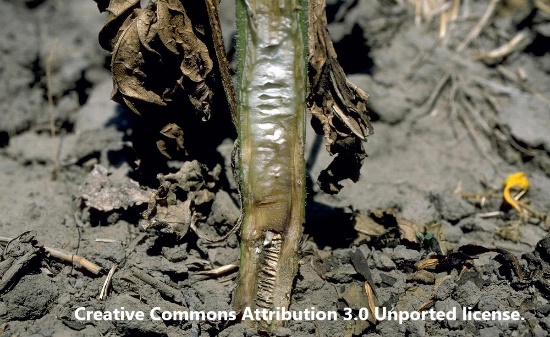
A team of biologists, led by Bart Thomma at the University of Cologne (UoC), Germany, in collaboration with Michael Seidl Utrecht University in the Netherlands, has found that the pathogenic fungus Verticillium dahliae, responsible for wilt disease in many crops, secretes an ‘effector’ molecule to target the microbiome (i.e., the totality of bacteria and other microbes living in and on it) of plants to promote infection. The study shows that the fungus secretes the antimicrobial protein VdAMP3 to manipulate the plant’s microbiome as an effector. “In terms of evolution, the molecule that is secreted is very old. Homologs also occur in organisms that are not pathogenic on plants,” said Thomma. “It looks like Verticillium “used” the molecule to “exploit” it during the process of disease development on the host. Interestingly, the molecule does not act like a broad-spectrum antibiotic that targets any microbe, but specifically against “competitor” fungi that have abilities to hinder Verticillium.”
This is in addition to the direct suppression of the plant host’s immune responses; these pathogens can suppress immunity indirectly by affecting the plant’s healthy microbiome. Verticillium contains a molecule that acts like an antibiotic, but specifically against “competitor” fungi. The researchers demonstrate that pathogens use various molecules at various stages of the disease process to manipulate the healthy microbiome of a host to cause and promote disease. Thus, it is important to look beyond the “binary interaction” between a pathogen and a host to better understand the disease. In the long term, a better understanding of these mechanisms will help to develop more resilient plants and better strategies for crop protection. The researchers have demonstrated that pathogen effector repertoires comprise antifungal proteins and such effectors could be exploited for the development of antimycotics.
Access the full paper at https://www.pnas.org/content/118/49/e2110968118
7. Newly identified gene for resistance to root and stem rot accelerates breeding of resilient soybean plants
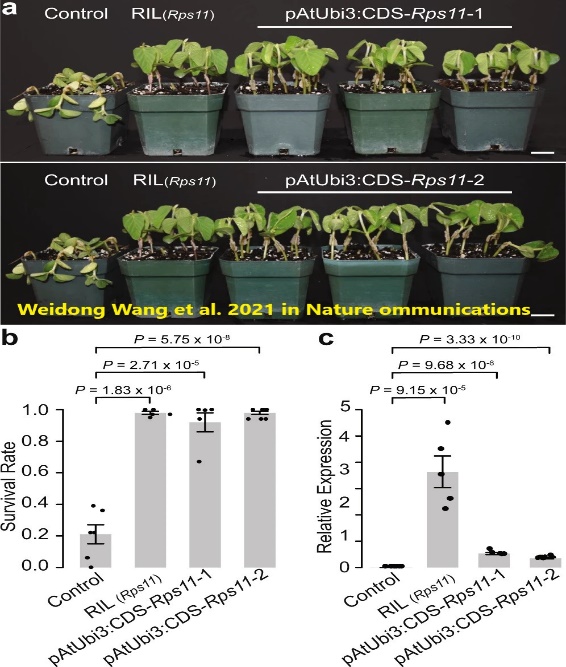
A newly identified gene makes it possible to enhance soybeans’ natural resistance to a devastating disease. Purdue University announced an academic-industrial partnership with Corteva Agriscience. which resulted in the identification of an individual gene responsible for Phytophthora resistance, so that plant breeders can easily detect which plants carry the trait. Phytophthora is a mold responsible for root and stem rot, which can ravage soybean fields and costs farmers more than $1 billion annually worldwide. Like fungi and other pathogens, the soilborne mold has evolved, and the resistance of existing soybean lines is waning. “We don’t have to wait for a plant to grow to see if it carries this trait, or waste resources breeding plants without it. This precision breeding accelerates the speed at which a new, robust cultivar can be put in the hands of farmers” said Jianxin Ma, Professor of Agronomy, Purdue University, USA. Ma and his team identified and cloned the gene, a critical step to create molecular markers that precisely detect the presence of the gene—the same principle used in testing for COVID-19.
The Rps11 gene, which confers resistance to Phytophthora, is found in a complex region of the genome, which carries a dozen genes that are structurally similar to, but functionally distinct from, Rps11. The number of such genes in the region varies among plant varieties from 5 to 23, making it difficult to find Rps11. The project team used the company’s high-throughput genotyping and sequencing technologies to pinpoint a novel gene responsible for Phytophthora resistance. The research team hopes to be able to do the same for the other three genes they identified.
Access the full paper at https://www.nature.com/articles/s41467-021-26554-8.pdf
Potential Crops/Technologies/Concepts
1. Differentiating friends from foes in the fungal root microbiome
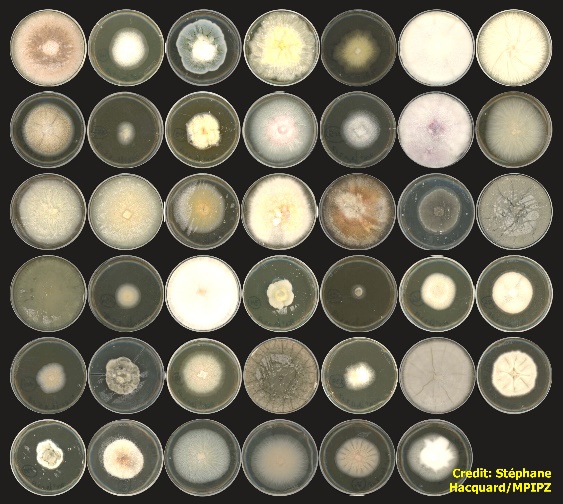
Complex microbial communities inhabit plants and modulate their development. Roots, especially, host a wide diversity of micro-organisms—including bacteria and fungi—that directly influence plant health. Researchers from the Max Planck Institute for Plant Breeding Research, Cologne, Germany (MPIPZ), had previously discovered that these fungi are important members of the root microbiome that can promote plant growth, but only when they are kept in check by the combined action of the host innate immune system and root-inhabiting bacteria. Fantin Mesny from MPIPZ and colleagues now provide novel insights into how these fungi colonize roots, why many of them are potentially harmful, and what differentiates beneficial from pathogenic fungi in the root microbiome.
To better characterize these root-colonizing fungi in their broad diversity, researchers have isolated a variety of fungal strains from the roots of healthy plants across Europe, and thus selected 41 that are representative of the root microbiome of Arabidopsis thaliana. Surprisingly, the scientists found that most root mycobiota members isolated from the roots of healthy plants are derived from ancestors that were likely pathogenic, but have retained a battery of genes that were previously shown to be lost in genomes of beneficial mycorrhizal fungi. Using a combination of association methods, including machine-learning models, the researchers were able to identify a candidate gene family that could explain the detrimental effects and root colonization abilities. These results indicate that repertoires of plant cell-wall degrading enzymes in fungal genomes are the key genetic determinants driving access to the root endosphere; they also explain why robust root colonizers can potentially become harmful if they degrade roots too aggressively. These findings could provide a rationale on how to design and optimize synthetic fungal communities to obtain beneficial outcomes on plant performance.
For more, see https://phys.org/news/2021-12-differentiating-friends-foes-fungal-root.html
Access the full paper at https://www.nature.com/articles/s41467-021-27479-y
2. Gene-editing discovery yields high promise for wheat fertility in a changing climate
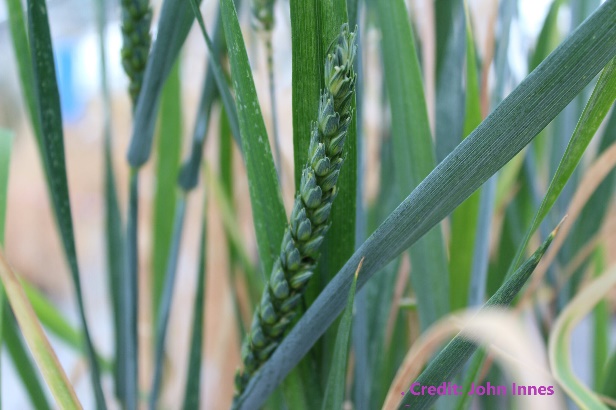
A gene that has profound effects on the production of seeds has been identified by researchers from the John Innes Centre. Gene-editing techniques helped to identify and explain the key gene, ZIP4, in wheat which is responsible for maintaining 50% of yield in this global crop. The discovery presents an exciting new opportunity to breed high-yielding, elite wheat varieties using a novel mutation of the gene, while also allowing the introduction of critically important traits, such as heat resilience and disease resistance. In the study, Graham Moore’s research group at Crop Genetics Department, John Innes Centre, Norwich, UK, took advantage of recent developments in wheat research technology to explain genetic elements which have puzzled scientists for more than 60 years.
The research team describes the identification of ZIP4 and its phenotype. The polyploid wheat genome evolved as a combination of wild grasses which cross-fertilized, some 10,000 years ago, in the Middle East. During wheat polyploidisation, the major meiotic gene ZIP4 duplicated from chromosome 3 into chromosome 5B. Previous studies had shown that the duplicated gene performs two key functions in stabilizing the wheat genome during meiosis: promotion of faithful chromosome pairing, and suppression of crossover between related chromosomes. Excitingly, the ‘promotion of correct pairing’ phenotype in the separation of function ZIP4 5B mutant wheat, maintained chromosome stability and preservation of grain number. “Until now the importance of this second phenotype to the preservation of grain number has been unclear. Our study has shown that the new mutant should now be used in wheat breeding to maintain yield and, because it does not have the suppression function, to increase the chance of successful introgression of desirable wild relative chromosome segments into wheat,” Professor Moore adds.
Access the full paper at https://www.nature.com/articles/s41598-021-01379-z
3. A package of policies can help smallholder farmers adapt to a changing climate

In the grasslands of Nepal’s Chitwan Valley, local farmers rely on the production of rice and other grains to generate household income. But their livelihoods are under threat, as Nepal is experiencing the effects of climate change at a much faster rate than the global average. Without agricultural policy interventions, crop yields will suffer and farmers will lose about a quarter of their incomes on average by 2050. This is likely to prevent some farming households from being able to engage in labour migration. Ultimately, these impacts will cause more households to fall into poverty and increase economic inequality.
Princeton University researchers, led by Nicolas Choquette-Levy, have used a novel approach to examine the interplay between climate change and migration in South Asia. They used an agent-based model that can simulate how individual decision-making and interactions between households would be affected by different policies and environmental conditions. In a scenario of a global temperature increase to 1.5°C above preindustrial levels by 2050, South Asian farmers will see a 28% drop in household income, compared to a stable climate. “It’s time to start paying attention to this before it’s too late,” researcher Michael Oppenheimer, the corresponding author, said. According to researchers at the University of Bristol, combining a small monetary transfer with risk transfer mechanisms dramatically enhances the adoption of migration and cash crops, improves community incomes, and reduces community inequality. By addressing the convergence of risk aversion, financial restrictions, and climate consequences, these interventions are effective in enhancing adaption results and reducing immobility.
Access the abstract at https://www.nature.com/articles/s41558-021-01205-4
4. Researchers develop a method for early detection of bacterial infection in the crop
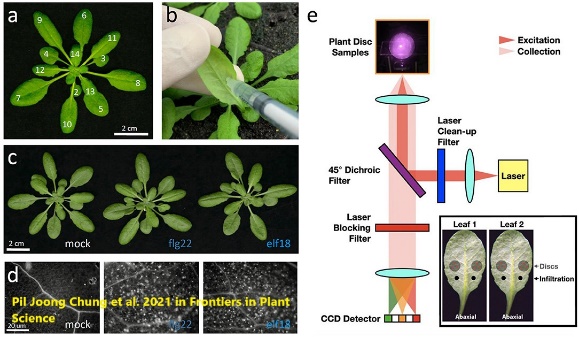
Researchers of Singapore-MIT Alliance for Research and Technology (SMART) and their local collaborators from Temasek Life Sciences Laboratory (TLL), led by Pil Joong Chung, have developed a rapid Raman spectroscopy-based method for the detection and quantification of early bacterial infection in crops in early stages, which is faster and more accurate than the existing techniques The Raman spectral biomarkers and diagnostic algorithm enable the non-invasive and early diagnosis of bacterial infections in crop plants, which can be critical for the progress of plant disease management and agricultural productivity. Hence, developing methods for rapid and early detection of pathogen-infected crops is important to improve plant disease management and reduce crop loss. The breakthrough by SMART and TLL researchers offers a faster and more accurate method to detect bacterial infection in crop plants at an earlier stage, as compared to existing techniques.
Molecular detection methods largely depend on the availability of pathogen-specific gene sequences or antibodies to identify bacterial infection in crops. Using such techniques is also time-consuming and difficult to adapt to field conditions dues to the high cost and bulky equipment required. The present method uses a portable system and is more effective than existing techniques enabling accurate identification and early detection of bacterial infection, both of which are crucial to saving crop plants that would otherwise be destroyed- explained Gajendra Pratap Singh, Scientific Director and Principal Investigator at DiSTAP, and co-lead author. “The results showed that the Raman spectroscopy-based method can swiftly detect and quantify innate immunity response in plants infected with bacterial pathogens” said co-corresponding author Rajani Sarojam. The use of this method will provide an important tool for the identification of plants with early pathogen infection and for facilitating effective disease management
Access the full paper at https://www.frontiersin.org/articles/10.3389/fpls.2021.746586/full
5. New models needed for food system transformation
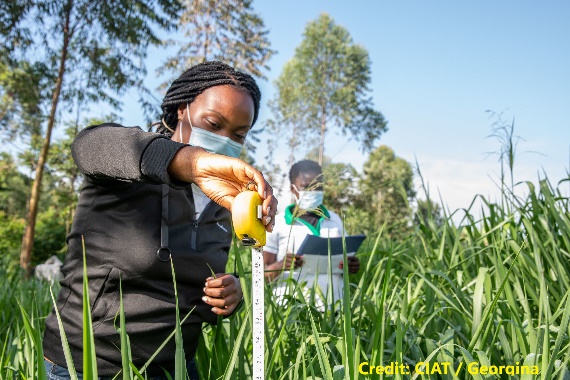
Food systems are responsible for a third of global greenhouse gas emissions from human activity, and agricultural yields are at risk due to climate change impacts. And yet, there is not a clear picture of the different elements of the agricultural research and food production ecosystem. According to a paper titled “Enacting theories of change for food systems transformation under climate change,” published in Global Food Security, food systems are responsible for a third of global greenhouse gas emissions from human activity, and agricultural yields are at risk due to climate change impacts. To help address this, Dhanush Dinesh, CGIAR Research Program on Climate Change, Wageningen University and Research (WUR), the Netherlands, and colleagues interviewed 262 attendees at the 2019 Global Science Conference on Climate-Smart Agriculture in Bali, Indonesia, across researchers, funders, and end-users, to assess the key leverage points needed to address to radically shift the food system to a new place.
One of the major findings was that to achieve climate and sustainability goals, farmers should be seen as partners in research and contribute, as well as being beneficiaries. “Researchers can design new tools for research but to help farmers, we need to know what their financial and policy needs are,” he said. “All this is a shift in power from researchers as the powerful knowledge providers to a place where funders, farmers, and researchers everyone is equal and shaping it in an equitable way. It’s not happening now, but we are recognizing this needs to change.” According to Laurens Klerkx, a co-author, models with joint agenda setting, in which farmers can take part in deciding on proposal focus, priority setting, and decision-making, and which thus induce in them a feeling ownership, provide a good example.
For more, see https://phys.org/news/2021-12-food.html?utm_source=nwletter&utm_medium=email&utm_campaign=daily-nwletter
Access the full paper at https://www.sciencedirect.com/science/article/pii/S2211912421000912?via%3Dihub
6. City allotments match farming productivity per square meter

In these days of terrace gardening, urban farming, etc., here may be an idea that could be included in developing plans for many cities (for example, Smart Cities, or into city Master Plans). A citizen science project by the University of Sussex, UK, has found that urban growers in Brighton and Hove were able to harvest 1kg of insect-pollinated fruit and vegetables per one meter square, which is within the range of conventional farming. The yields the urban farmers were able to harvest averaged 70kg over a season and were achieved with limited pesticide use, indicating benefits to biodiversity through habitat creation and low environmental damage, compared to conventional farming practices. Pesticides were only used in less than 10% of pest cases, benefitting both the insects and the wildlife that feeds on them. The findings show that urban growing not only offers local produce with limited pesticide use but also creates biodiversity havens in cities: a win-win for the environment. Urban farming may help with local food security, but it is not necessarily scalable, because it is very labour intensive.
Beth Nicholls, a UK Research and Innovation Future Leaders Fellow at the University of Sussex, further highlighted the potential of UK urban farming: “The UK imports approximately £8 billion of fruit and vegetables each year, but our results show that green spaces in cities, such as allotments and community gardens, could play an important role in meeting that demand at a local scale.” Knowledge gaps remain regarding urban crop productivity, pollinator dependency, and pesticide use. Beth mentioned that her team was collaborating with researchers from the Centre for Pollination Studies at the University of Calcutta, India, who are exploring the viability of urban food production where such production happens on a larger scale, and where food is produced both for personal consumption and for sale at markets.
7. Study shows pesticides can impact generations of bees. Here’s what you can do

A recently released study by researchers at the University of California, Davis, revealed that pesticides can have lasting effects on bee health, reducing their reproduction rate. According to the finding, multiple generations of bees may be needed to recover from one pesticide application. The study was conducted by Clara Stuligross and Neal Williams, UC-Davis, by exposing blue orchard bees to imidacloprid, a common insect control chemical, with the label’s recommended amount. Bees that were exposed to the chemical two years straight had a 72% reduced population growth rate, compared to bees that did not have any level of exposure. “Repeated exposure across two years had an additive negative effect on individual reproduction, which led to a dramatic reduction in population growth,” said Clara Stuligross, the study’s lead author.
According to Planet Bee Foundation, an environmental education nonprofit based in San Francisco, bees are the most efficient pollinators in the world. “And so understanding how this pesticide exposure affects bees over time is important for understanding how to support them and how to continue supporting our healthy and sustainable food systems,” says Stuligross. She added that that the most important thing people can do is reduce their pesticide usage around bees as much as possible. This means not using these chemicals when crops and flowers are in bloom, because bees are generally attracted to plants that are flowering with nectar and pollen. If one must spray an insecticide on a crop, one should reduce any drift of the chemical to nearby plants that are blooming.
For more, see https://phys.org/news/2021-12-pesticide-impact-bees.html?utm_source=nwletter&utm_medium=email&utm_campaign=daily-nwletter
Access the abstract at https://www.pnas.org/content/118/48/e2109909118.short
News:
1. Irrigation, water management play key roles in smoothing drought impacts

A new study examining more than 100 years of agricultural production and weather data in the United States suggests stored water plays an important role in providing resilience to drought. Access to stored water drives irrigation, whether that water is located in an underground aquifer or a dammed river. In the western U.S., irrigation makes agriculture possible in mostly arid conditions. More precipitation and humidity have generally made farmers think of irrigation as superfluous. But that seems to be changing as the climate changes. A study shows that farmers who have access to groundwater and surface water tend to bring more land into cultivation during drought, compared to those who do not.
The incomplete governance of groundwater withdrawals in many areas allow resiliency in the near term, but potentially at the expense of future water availability. Conversely, surface water rights allow for the widespread application of irrigation water, but with less resiliency during significant periods of drought. The study, carried out by Steven Smith Eric Edwards from Colorado School of Mines, Golden, USA, has implications for policy in the western U.S., as well as in North Carolina, which is projected to have longer dry spells due to climate change.
Access the full paper at https://iopscience.iop.org/article/10.1088/1748-9326/ac358a/pdf
2. Finding the recipe for a larger, greener global rice bowl
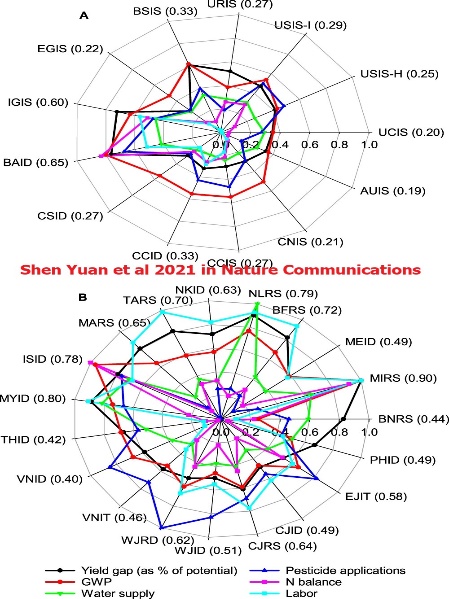
The challenge is to produce more rice on existing cropland, and to do so while minimizing the environmental impact. New research provides an analysis of roadmaps toward sustainable intensification for a larger global rice bowl. The assessment was led by Shaobing Peng of Huazhong Agricultural University, China, and Patricio Grassini from the University of Nebraska-Lincoln, USA, with their colleagues. The study is the most comprehensive global evaluation of production systems for a major staple crop in which yield gap and resource-use efficiency (including water, pesticides, nitrogen, labour, energy, and associated global warming potential) across 32 rice-cropping systems, which cover half of the global rice-harvested area, were included.
Two-thirds of the total rice area in the study had yields that are below those that can be attained with good agronomic practices. Results show that achieving high yields and high resource-use efficiencies are not conflicting goals. Most cropping systems have room for increasing yield, resource-use efficiency, or both. Closing the existing yield gap requires better nutrient, pest, soil, and water management, reduction of production risk, researchers say. This study provides strategic insight on yield gap and resource-use efficiency for prioritizing national and global agricultural R&D investments, so as to ensure adequate rice supply while minimizing negative environmental impact in the coming decades.
For more, see https://www.sciencedaily.com/releases/2021/12/211209201702.htm
Access the full paper at https://www.nature.com/articles/s41467-021-27424-z
3. Climate efforts won’t succeed without secure community rights, says Nonette Royo
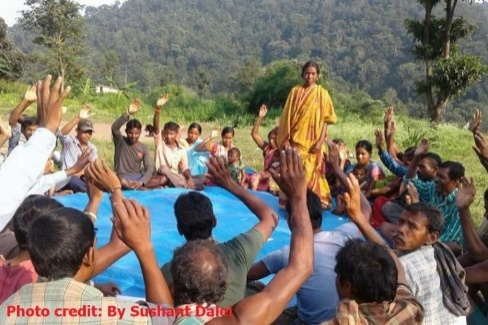
Given that Indigenous territories account for at least 36% of the world`s “intact forests” and Indigenous Peoples and local communities (IPLC) live in or manage about half of the planet`s lands, these areas play a critical role in addressing the major environmental challenges we face, from biodiversity loss to climate change. Helping IPLCs secure land rights is increasingly seen as a central component of efforts to address climate change and achieve conservation goals. Nonette Royo, the executive director of the Tenure Facility, which was created to provide financial and technical support to IPLCs, is one of the most prominent advocates for advancing the rights of Indigenous Peoples, local communities, and women. Mapping and delineation of territories are mainly ‘social’ processes. That means it can’t be outsourced to a company or government: communities must lead the process, says Royo.
A common early step across projects involves a community documenting its customary land-use practices and territory. This information can then be used as a tool to leverage legal rights frameworks at local, national, and international levels. She has been working at the intersection of Indigenous Peoples, natural resources, and land rights for more than 25 years. Mapping technology has advanced so much that it frees up budget and time to spend in social or community organizing and social mobilization, she says.
For more, see https://news.mongabay.com/2021/12/climate-efforts-wont-succeed-without-secure-community-rights-says-nonette-royo/
4. Are climate-smart forestry practices the key to restoring biodiversity?

Forests have often been referred to as the “lungs of the planet,” but their role in carbon storage is increasingly recognized as essential to keeping global temperature increases to under 1.5°C. What role does private finance have to play in tackling a global issue as vast as forestry preservation? There are increasing mechanisms and resources to “monetise” conservation and carbon values through carbon offsets, biodiversity offsets, and other mechanisms. Managing natural landscapes for their whole suite of products and ecosystem services makes financial sense.
The forests of the western U.S. are exemplary in their capacity to store carbon, by growing large trees that routinely live for over 300 years and sustain a vast network of underground carbon. Financial Management for Business Growth (EFM) became the first B-Corporation (B-Corp) in 2011—the first forestry company to receive that recognition—and have consistently been recognized as “best for the world” due to the social and environmental benefits their activity generates. If timber prices are down, EF can turn to carbon markets or focus on developing conservation easements, within the context of a long-term plan for the forest, established at purchase, which moves it towards improved health, biodiversity, carbon storage, productivity, resilience, and benefit to communities.
5. African Sahelian farmers diversify crops to adapt to climate change
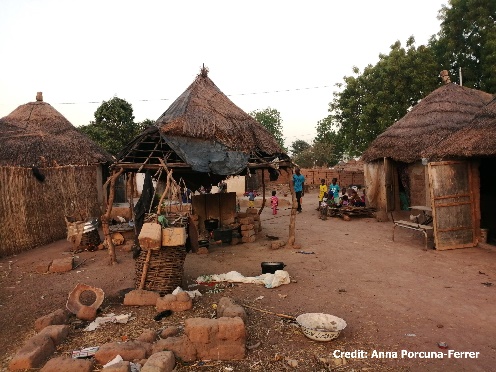
The Sahel agricultural community in Africa has adapted to the high seasonal fluctuations and rising temperatures caused by climate change in the last century. According to a study conducted by the Institute of Environmental Science and Technology (ICTA-UAB), researchers Anna Porcuna Ferrer and Victoria Reyes García with Faustine Ruggieri of Centre de Coopération Internationale en Recherché (CIRAD), Serer, farmers were exposed to four different climatic periods with fluctuations in precipitation, temperature, and wind in the last century. The results show that during the drought, farmers adopt short-cycle agricultural varieties that take less time to mature. Long-cycle varieties are abandoned and will be used again during heavy rainfall.
During this time, and to maintain production during the dry period, farmers have introduced most of the short-cycle varieties they grow today. Farmers adapt to shorter rainy seasons and increase the chances of a good harvest by using animal-powered tools that can cultivate larger areas faster. “Understanding how farmers use crop diversity to adapt to climate change is the basis of strategies for adapting to climate change that address local needs and constraints,” Ferrer explains.
Access the abstract at https://bioone.org/journals/journal-of-ethnobiology/volume-41/issue-3/0278-0771-41.3.389/Crop-Diversity-Management–Sereer-Smallholders-Response-to-Climatic-Variability/10.2993/0278-0771-41.3.389.short
6. Genes responsible for leaf browning after pesticide treatment identified
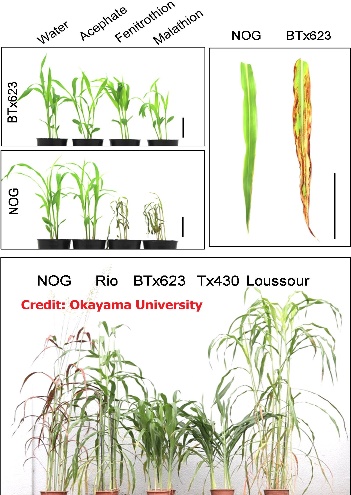
Sorghum, an underrated ancient grain, is slowly becoming well known as a superfood due to its nutrient-dense and gluten-free nature. Sorghum syrup is widely used as a healthy alternative to molasses in the food industry, and this cereal is also used to make gluten-free flour. Researchers from Okayama University, Japan, led by Wataru Sakamoto, have been studying the cellular mechanisms that cause organophosphate sensitivity (OPS) in sorghum plants. Also, to understand which genes caused OPS in sorghum, they used quantitative trait locus mapping and examined the genetic locations associated with OPS in a Japanese cultivar, known as “Nog.” Mapping OPS in this population identified a prominent QTL on chromosome 5, which corresponded to the Organophosphate-Sensitive Reaction (OSR) reported previously in other mapping populations. The results help in an improved understanding of the diverse roles played by the nucleotide-binding leucine-rich repeat (NB-LRR) proteins in sorghum.
These findings could help in the development of sorghum varieties that can be grown safely with organophosphate treatment, thus improving the longevity of this crop. These findings of OSR as a dominant trait are important not only in understanding the diversified role of NB-LRR proteins in cereals, but also in securing sorghum breeding free from OPS. Moreover, this OPS trait is not specific to sorghum; it can also be observed in other important plants, including tomato. Further research is necessary to understand how OPS differs among different varieties of sorghum and other plants. Nevertheless, the work by Prof Sakamoto’s team represents an important advance in not only food security but also biomass and biofuel generation.
Access the full paper at https://www.nature.com/articles/s41598-021-98908-7
7. A strategy to preserve biodiversity while saving space
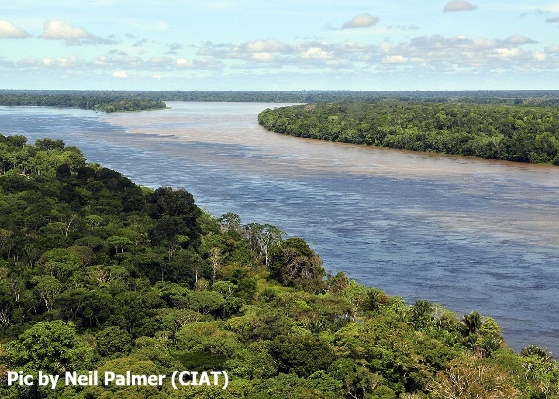
In South and Central America, an especially high number of biodiverse areas are in jeopardy. Tropical rainforests are being cleared, so that the land can be used for livestock grazing and planting soybeans. To compensate for these losses, other areas need to be placed under protection. At the Universität Hamburg, environmental expert Kerstin Jantke is working to select protected areas in such a way as to preserve as many species and ecosystems as possible, while simultaneously ensuring minimal competition with agricultural areas. Suitable protected areas can enhance the ecosystems’ ability to adapt to climate change.
Distribution maps of the target area were already available for threatened amphibians, birds, mammals, and reptiles, a total of 8,563 species. These efforts have yielded three geographic maps, which show the areas that are optimally suited for protecting 17% of every species, 17% of every ecosystem, and 17% of every functional group, respectively. In a nutshell. the areas don’t match, which tells us that species distribution alone isn’t a sufficient indicator of biodiversity. The spatial mismatch in the portfolios of areas shows how the use of a single level of biodiversity would lead to the omission of conservation priorities for other levels. Researchers also identified critical areas for conservation, where irreplaceable spatial priorities of the different biodiversity attributes matched. These areas coincided with known critical and threatened global biodiversity hotspots, and are mostly located in the Chaco, the Atlantic Forest, the Pantanal, Cerrado, and Caatinga regions, and the moist and dry forests of the northern Andes and Mesoamerica.
For more, see https://www.sciencedaily.com/releases/2021/12/211215113250.htm
Access the full paper at https://www.sciencedirect.com/science/article/pii/S0006320721004730
8. Arriving in mainland Malaysia, banana “Blood” disease now poised to spread throughout Southeast Asia
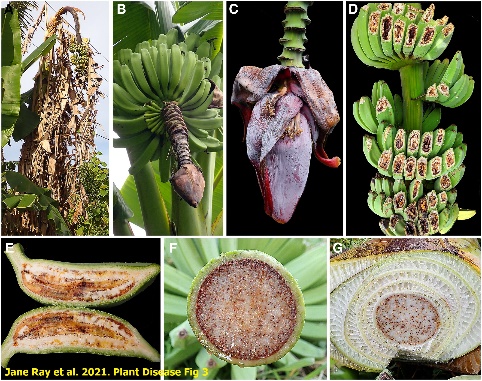
The world`s most consumed fruit and an important staple for many developing companies, bananas are increasingly threatened by “Blood” disease, so named because cut banana stems look like they are bleeding. “Without intervention, the losses are likely to be devastating due to epidemics in areas where growers have no experience managing this disease,” explained Jane Ray, at the University of Queensland, Australia, who is studying the biology and epidemiology of the disease.
Their study confirmed Blood disease in 18 different varieties of banana, including Cavendish, the world`s most popular banana variety, and other members of the Musa genus. “The long-distance distribution of the disease followed an arbitrary pattern, indicative of human-assisted movement of infected banana materials. In contrast, local or short-distance spread radiated from a single infection source, indicative of dispersal by insects and possibly contaminated tools, water, or soil. The rapid expansion of its geographical range makes Blood disease an emerging threat to banana production in Southeast Asia and beyond. Greater clarity regarding modes of disease transmission is urgently required to develop effective disease management approaches, as the rapid expansion of Blood disease is an emerging threat to banana production in Southeast Asia,” said Ray.
Access the full paper at https://apsjournals.apsnet.org/doi/10.1094/PDIS-01-21-0149-RE
9. Chickpeas, a neglected crop, may soon get a high-tech makeover
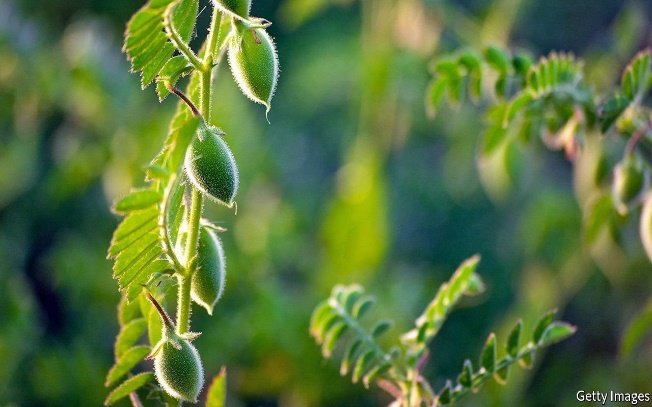
Although chickpeas are diverse, two main types are recognised: the large, light-coloured Kabuli and the smaller, darker Desi. A study, carried out by Rajeev Varshney at the International Crops Research Institute for the Semi-Arid Tropics (ICRISAT) and colleagues, aimed to identify blocks of genes, called haplotypes, that encode particular, desirable properties, and which could be bolted together in various combinations to yield both better chickpeas overall, and chickpeas better suited to particular sets of circumstances. Such an elucidation requires characterization at genome sequencing and, to date, very few chickpea accessions have been so characterized.
In the present study, researchers developed a detailed map of variation in 3,171 cultivated and 195 wild accessions to provide publicly available resources for chickpea genomics research and breeding. They constructed a chickpea pan-genome to describe genomic diversity across cultivated chickpea and its wild progenitor accessions. Superior haplotypes for improvement-related traits in landraces were identified, which can be introgressed into elite breeding lines through haplotype-based breeding. Researchers also found targets for purging deleterious alleles through genomics-assisted breeding and/or gene editing. The authors propose three crop breeding strategies, based on genomic prediction to enhance crop productivity for 16 traits while avoiding the erosion of genetic diversity through optimal contribution selection-based pre-breeding.
For more, see https://www.economist.com/science-and-technology/chickpeas-a-neglected-crop-may-soon-get-a-high-tech-makeover/21806678
Related full paper https://www.nature.com/articles/s41586-021-04066-1.pdf
Events (July 2022)
1. International Conference on Environmental and Agricultural Economics (ICEAE): 08-09 Jul 2022, Prague, Czechia.

For more, see https://waset.org/environmental-and-agricultural-economics-conference-in-july-2022-in-prague
2. International Conference on Conservation Agriculture and Soil Health (ICCASH): 15-16 Jul 2022, Bali, Indonesia.

For more, see https://waset.org/conservation-agriculture-and-soil-health-conference-in-july-2022-in-bali
3. International Conference on Agricultural Genomics (ICAG): 19-20 Jul 2022, Paris, France.

For more, see https://waset.org/agricultural-genomics-conference-in-july-2022-in-paris
4. International Conference on Agriculture, Ecosystems and Environment (ICAEE): 22-23 Jul 2022, Berlin, Germany.

For more, see https://waset.org/agriculture-ecosystems-and-environment-conference-in-july-2022-in-berlin
5. International Conference on Agricultural Biotechnology and Microbial

Genetics (ICABMG): 29-30 Jul 2022, Vienna, Austria.
For more, see https://waset.org/agricultural-biotechnology-and-microbial-genetics-conference-in-july-2022-in-vienna
6. International Conference on Agriculture and Phytohormones (ICAP): 29-

30 Jul 2022, Istanbul, Turkey.
For more, see https://waset.org/agriculture-and-phytohormones-conference-in-july-2022-in-istanbul
Other Topics of Interest
1. CIP: Putting the world’s largest potato collection in the deep freeze
For more, see https://www.potatonewstoday.com/2021/11/28/cip-putting-the-worlds-largest-potato-collection-in-the-deep-freeze/
2. Indian farmers defend rights of farmers everywhere
For more, see https://asiatimes.com/2021/11/indian-farmers-defend-rights-of-farmers-everywhere/
3. Using less-profitable farmland to grow bioenergy crops also supports biodiversity
4. Comparing photosynthetic differences between wild and domesticated rice
Access the full paper at https://onlinelibrary.wiley.com/doi/10.1002/fes3.286
5. Soil study shows why nitrous oxide emissions should factor into climate change mitigation
6. Agriculture and conservation objectives do not have to be at odds
For more, see https://phys.org/news/2021-11-agriculture-odds.html?utm_source=nwletter&utm_medium=email&utm_campaign=daily-nwletter
7. Bacteria engage sulfur for plant salt tolerance
8. Rice varieties with a high endosperm lipid content reduce starch digestibility and increase γ-oryzanol bioaccessibility
9. How is agriculture helping battle climate change?
10. Climate change is making nights warmer—and crops may never be the same
For more, see https://civileats.com/2021/12/17/climate-change-is-making-nights-warmer-crops-may-never-be-same/
11. Nutrition for Growth garners $27B in commitments
For more, see https://www.printfriendly.com/p/g/VMeibH
12. India’s natural farming push: Obvious measures ignored, points out Standing Committee
13. Regenerative farming reduces emissions and is more profitable and could reduce GHG emissions
For more, see https://qz.com/2093871/regenerative-farming-can-reduce-emissions-and-be-more-profitable/amp/ and https://geneticliteracyproject.org/2021/12/14/viewpoint-regenerative-farming-modeled-on-organic-agriculture-could-reduce-greenhouse-gas-emissions-pro-organic-study-claims/
14. Susceptibility reversed: modified plant susceptibility genes for
resistance to bacteriaFor more, see https://www.cell.com/trends/plant-science/fulltext/S1360-1385(21)00205-3?dgcid=raven_jbs_etoc_email
15. How do plants sense volatiles sent by other plants and ‘talk’ to their neighbours?
For more, see https://www.cell.com/trends/plant-science/fulltext/S1360-1385(21)00220-X?dgcid=raven_jbs_etoc_email
16. Diverse plant water-use strategies make forests more resilient to extreme drought
Access the abstract at https://www.science.org/doi/10.1126/science.abj6789
17. Biodiversity loss in plants worldwide
For more, see https://www.sciencedaily.com/releases/2021/12/211215082025.htm
Access the full paper at https://www.nature.com/articles/s41467-021-27603-y
18. Plant breeding advances may spark annual corn and soybean yield increases
For more, see https://www.agriculture.com/crops/corn/plant-breeding-advances-may-spark-annual-corn-and-soybean-yield-increases and https://geneticliteracyproject.org/2021/12/14/how-epigenetic-tweaks-can-increase-corn-and-soybean-yields/?utm_medium=email&utm_source=je%E2%80%A6%201/7
19. An International Institute will help us manage climate change
For more, see https://www.scientificamerican.com/article/an-international-institute-will-help-us-manage-climate-change/
20. Global loss of floristic uniqueness due to the spread of alien plants
Access the full paper at https://www.nature.com/articles/s41467-021-27603-y
21. Realizing the potential of CRISPR-Cas technology to mitigate climate change and reduce poverty and malnutrition
And
https://geneticliteracyproject.org/2021/12/13/viewpoint-an-argument-for-crispr-crops-very-little-about-modern-life-is-natural-and-its-time-we-all-got-over-it/ and https://www.newswise.com/articles/harnessing-the-power-of-crispr-to-reduce-poverty-and-malnutrition
And
https://www.newswise.com/articles/harnessing-the-power-of-crispr-to-reduce-poverty-and-malnutrition
22. US university sends cotton to space to explore potentials of somatic embryogenesis in genome editing
For more, see https://www.isaaa.org/kc/cropbiotechupdate/article/default.asp?ID=19177 and
23. Scientists seize ‘once in a decade’ opportunity to advocate for genetically engineered trees
24. The sky’s the limit: Using airborne DNA to monitor insect biodiversity
For more, see https://phys.org/news/2021-12-sky-limit-airborne-dna-insect.html
25. Should we pay countries to protect their biodiversity? AND Solving multiple challenges while considering biodiversity and human rights
For more, see https://www.zmescience.com/science/pay-countries-protect-biodiversity-30082019/ and https://india.mongabay.com/2021/12/solving-multiple-challenges-while-considering-biodiversity-and-human-rights/
26. How researchers at UC Davis developed a new strain of rice to help farmers in Southeast Asia
For more, see https://www.wbur.org/hereandnow/2021/11/24/rice-floods-climate-change
27. Why poorer nations aren’t falling for Green-Washed Imperialism
For more, see https://www.pressenza.com/2021/12/why-poorer-nations-arent-falling-for-green-washed-imperialism/
28. Study shows that away from human touch, tropical forests can regenerate in 20 years
For more, see https://www.wionews.com/science/study-shows-that-away-from-human-touch-tropical-forests-can-regenerate-in-20-years-435723
29. Scientists solve the grass leaf conundrum
Access the abstract at https://www.science.org/doi/10.1126/science.abf9407
30. Arsenic in Connecticut wells may be a legacy of past pesticide use on orchards
For more, see https://acsess.onlinelibrary.wiley.com/doi/10.1002/jeq2.20304
31. WeChat app to improve agriculture practices and environment in China
32. Microbe sneaks past tomato defense system, advancing evolutionary battle
For more, see https://www.hortidaily.com/article/9385176/microbe-sneaks-past-tomato-defense-system-advancing-evolutionary-battle/
33. Novel transcription factor inhibits flavone and anthocyanin biosynthesis in chrysanthemum at high temperatures
34. Sustainability at the crossroadsFor more, see https://www.nature.com/articles/d41586-021-03781-z
35. Farmers ask for more data on cover crops
For more, see https://seedworld.com/farmers-ask-for-more-data-on-cover-crops/
36. Genetic discoveries could improve spinach’s disease resistance and palatability
Access the full paper at https://www.nature.com/articles/s41467-021-27432-z
37. Climate and soil determine the distribution of plant traits
For more, see https://www.nature.com/articles/s41559-021-01616-8
38. New generation of on-farm experiments can transform agriculture
For more, see https://www.fenews.co.uk/work-leadership/new-generation-of-on-farm-experiments-can-transform-agriculture/
39. Balancing oat kernel size and fiber content
Access the abstract at https://acsess.onlinelibrary.wiley.com/doi/10.1002/csc2.20605
40. Tackling the global land-use trilemma
For more, see https://www.dandc.eu/en/article/protecting-food-security-biodiversity-and-climate-requires-new-mindset-everywhere
41. Proposal for subfield of conservation – Quantitative conservation geography
For more, see
42. Forests with rich tree species grow more consistently
For more, see https://www.eurasiareview.com/18122021-forests-with-rich-tree-species-grow-more-consistently/ AND
43. Leishman: the sky is the limit for agriculture in Tanzania
For more, see https://www.thecitizen.co.tz/tanzania/supplement/leishman-the-sky-is-the-limit-for-agriculture-in-tanzania-3653988
44. Working with instead of against nature is the only way out of the climate and biodiversity crisis
45. Two eyes better than one: An innovative strategy for precision agriculture
Access the full paper at https://spj.sciencemag.org/journals/plantphenomics/2021/9892647/
46. Mitigating the environmental impact of herbicides
Access the abstract at https://pubs.acs.org/doi/10.1021/acs.est.1c01906
47. The rise and fall of monoculture farming
For more, see https://phys.org/news/2021-12-fall-monoculture-farming.html?utm_source=nwletter&utm_medium=email&utm_campaign=daily-nwletter
48. Plastics in soil threaten food security, health, and environment
For more, see https://news.un.org/en/story/2021/12/1107342?utm_source=UN+News+-+Newsletter&utm_campaign=a33872aacb-EMAIL_CAMPAIGN_2021_12%E2%80%A6%201/4
49. Smart farming: AI technologies for sustainable agriculture
50. Developing our future climate scientists
For more, see https://www.jic.ac.uk/blog/developing-our-future-climate-scientists/
51. Launch of genetic resources strategy for Europe and European collaboration on Plant Genetic Resources is missing opportunities and
Launch of genetic resources strategy for Europe
For more, see https://www.hortidaily.com/article/9383308/launch-of-genetic-resources-strategy-for-europe/
Access the full paper at https://www.mdpi.com/2223-7747/10/10/2165
52. Wildfires of varying intensity can be good for biodiversity
Access the abstract of related papers at https://www.sciencedirect.com/science/article/abs/pii/S0048969720358770?dgcid=coauthor and https://www.sciencedirect.com/science/article/pii/S0301479721000190
Access a related full paper at https://onlinelibrary.wiley.com/doi/full/10.1111/ddi.13281
53. I want you to panic as if your lights just went out
For more, see https://risk-monger.com/2021/11/14/i-want-you-to-panic-as-if-your-lights-just-went-out/
54. Mesh covers protect citrus trees from psyllids that transmit greening disease
Access the full paper at https://reader.elsevier.com/reader/sd/pii/S026121942100332X?token=8FEFECEBF83E274910AAD8F48DE5E646411C993A68A3ED7EBA499DFC234042005F35D6CD30CD79E88F0B6846AE6801F2&originRegion=eu-west-1&originCreation=20211218042349
